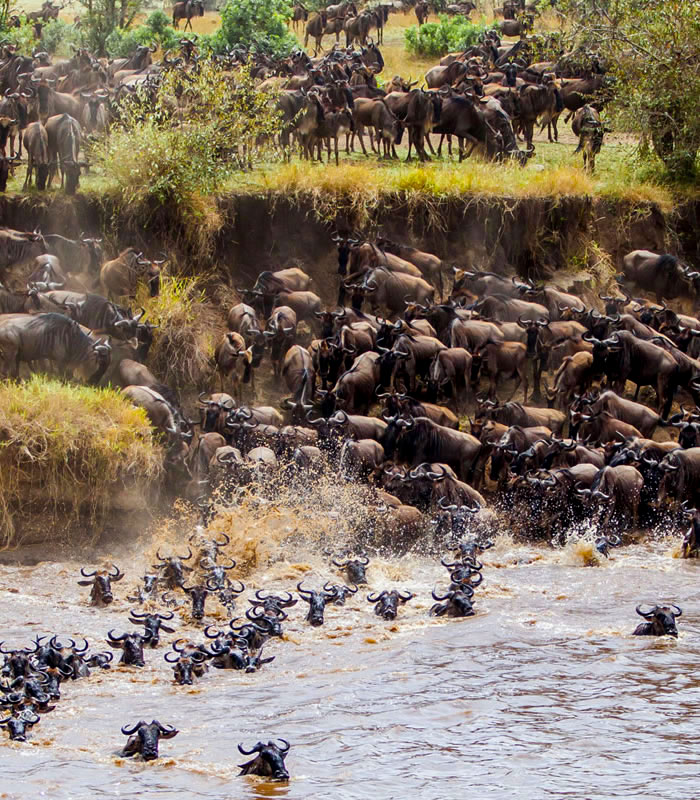Wildebeest migration in Kenya
The wildebeest migration in Kenya is a breathtaking natural spectacle. That occurs annually as millions of wildebeests, zebras, and other herbivores embark on a journey in search of fresh grazing pastures. This migration often associated with the Serengeti in Tanzania. But it extends into Kenya’s Maasai Mara National Reserve as well, creating one of the most remarkable wildlife events on the planet.
Here’s a closer look at the wildebeest migration in Kenya:
Timing:
The wildebeest migration is a year-round event, but the most dramatic and anticipated phase of the migration happens between July and October. When the herds cross into Kenya from Tanzania’s Serengeti. This period is commonly referred to as the “Great Migration.”
Route:
The migration typically follows a circular path, moving in a clockwise direction. The herds cross the Grumeti River in Tanzania, brave the Mara River in Kenya. And traverse the open plains and woodlands of the Maasai Mara. The migration route can vary slightly from year to year depending on weather conditions and food availability.
Mara River Crossing:
One of the most iconic and dramatic moments of the migration is when the herds attempt to cross the Mara River. This river is infested with crocodiles, making the crossing a perilous undertaking. Thousands of wildebeests and zebras gather at the riverbanks. Often hesitating before plunging into the turbulent waters.
Predator-Prey Interaction:
The migration provides a feast for predators, and big cats. Such as lions, leopards, and cheetahs, are often seen hunting amidst the chaos of the migration. This makes it an excellent time for wildlife enthusiasts and photographers to witness predator-prey interactions.
Hot Air Balloon Safaris:
Many tourists opt for hot air balloon safaris during the migration season. This allows for a unique perspective, as you can glide above the vast herds and capture breathtaking aerial views of the migration.
Maasai Mara:
The Maasai Mara National Reserve in Kenya is one of the primary destinations for witnessing the migration. Its wide-open plains and abundant wildlife make it an ideal location for travelers hoping to observe this natural phenomenon up close.

Accommodations:
The Maasai Mara offers a range of accommodations, including safari lodges, tented camps, and luxury resorts, ensuring that visitors have comfortable places to stay while witnessing the migration.
Conservation and Tourism:
The wildebeest migration is a testament to the importance of wildlife conservation. The revenue generated from tourism plays a vital role in funding conservation efforts to protect these magnificent animals and their habitats.
Best Time to Visit:
To witness the river crossings and the peak of the migration, the best time to visit the Maasai Mara in Kenya is typically between July and October. However, the timing can vary slightly from year to year, so it’s advisable to check with local experts or tour operators for the most up-to-date information.
The wildebeest migration in Kenya is a natural wonder that leaves a lasting impression on anyone fortunate enough to witness it. It’s a reminder of the awe-inspiring beauty and complexity of the natural world and serves as a testament to the importance of conserving these remarkable ecosystems.

